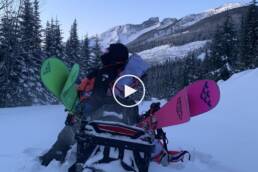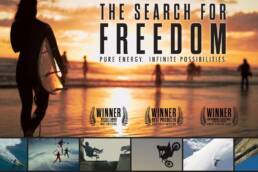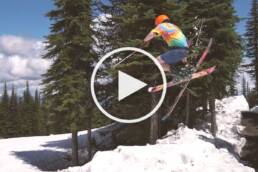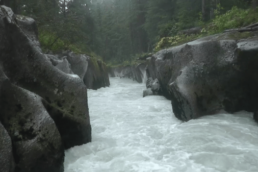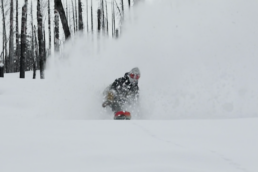On the heels of the release of the Gold Card Couloir video, we catch up with Revelstoke, British Columbia pro skier Christina Lustenberger to learn how the first descent all went down.
Christina “Lusti” Lustenberger has graced this site in the “Lusti for Life” feature as well as on the pages of Kootenay Mountain Culture Magazine multiple times. We’ve also had a hard time keeping up with her accomplishments via our social media channels given how prolific she’s been these past few seasons knocking off hard first descents. One of those descents is documented in the “Gold Card Couloir” video released last week and we caught up with Lusti to ask her about it.
The couloir is located between the peaks of Mount Burnham and Mount Grady in the Monashee Mountains and the descent took place on January 23, 2021 by Lusti, Brette Harrington, and Andrew McNab. They decided to name it “Gold Card” because while bootpacking one section, McNab pulled out his phone to snap a photo and his Visa card fell out and went sailing down the line. Lusti says she and McNab had gone in on two other occasions to look at the line but “its intimidating exposure and 200-metre-high hanging face makes your stomach drop at first glance.” They backed off and then returned with Harrington last January. It’s a 30 kilometre ride in and another two hours of skinning to get to the base of the feature, which consists of two ice pitches and one mixed climbing pitch, which means they were navigating rock and ice on the same pitch.
Hey Lusti. It’s been three years since we featured you on the cover of KMC, and in that time you’ve been racking up huge first descents. When did the idea for the Gold Card Couloir first come to fruition?
I had tried this line with Andrew twice before. And by “tried” I mean we took the journey in only to be completely intimidated by it, convince ourselves it wasn’t in, and ski out with our tails between our legs. Andrew and Adam Zok had also given it a go and turned around on the serac ice. It’s a beautiful line that will certainly compel the thoughts of an adventure skier. It had been on my mind ever since. So last year with the stay-local lockdown it was time to really put the energy into backyard lines.
We just profiled Andrew in KMC and watched Brette on-screen at “The Alpinist” unveiling. How did this all-star team come together?
I’ve been skiing with McNab for 11 seasons now. He’s a Revelstoke local who’s so talented and motivated. I really value him as a friend and ski partner. He’s got it all when it comes to ski mountaineering and steep skiing! It’s been a privilege to share lines with him. Brette and I were on the Arcteryx team together when we first met. We have both since joined The North Face. Obviously she’s a mega-strong climber, but she has a soft spot for skiing too. She’s become one of my great friends and adventure buddies. You never have to worry about her, she’s a weapon on rocks, ice, and loves steep exposure. It’s been fun to share our strengths and learn from each other.
There’s a pitch that involved mixed climbing. Is that something you do now?
No. I usually ice climb just enough to get into more terrain with my skis on. I do enjoy the challenge and it’s something I find myself drawn to more and more. Maybe I’m bored of skiing and just need to keep adding things to keep my mind into the game?
Take us through the specifics of the ascent.
We soloed the first step of ice lower down on the couloir. Once we got to the hanging serac Brette led two pitches, the second being the crux. Brette led this with an extremely strong head and determination, getting the crew onto the hanging snow face. With the adrenaline coursing through us from gaining the ice, we started the last of the cruxes, which was climbing a hanging snow field with the ice below. We swapped leads climbing to the col and reached the top just before 3:00pm. This was the only sun we felt all day and because we were feeling the urgency of the fleeting light, we made a quick transition.
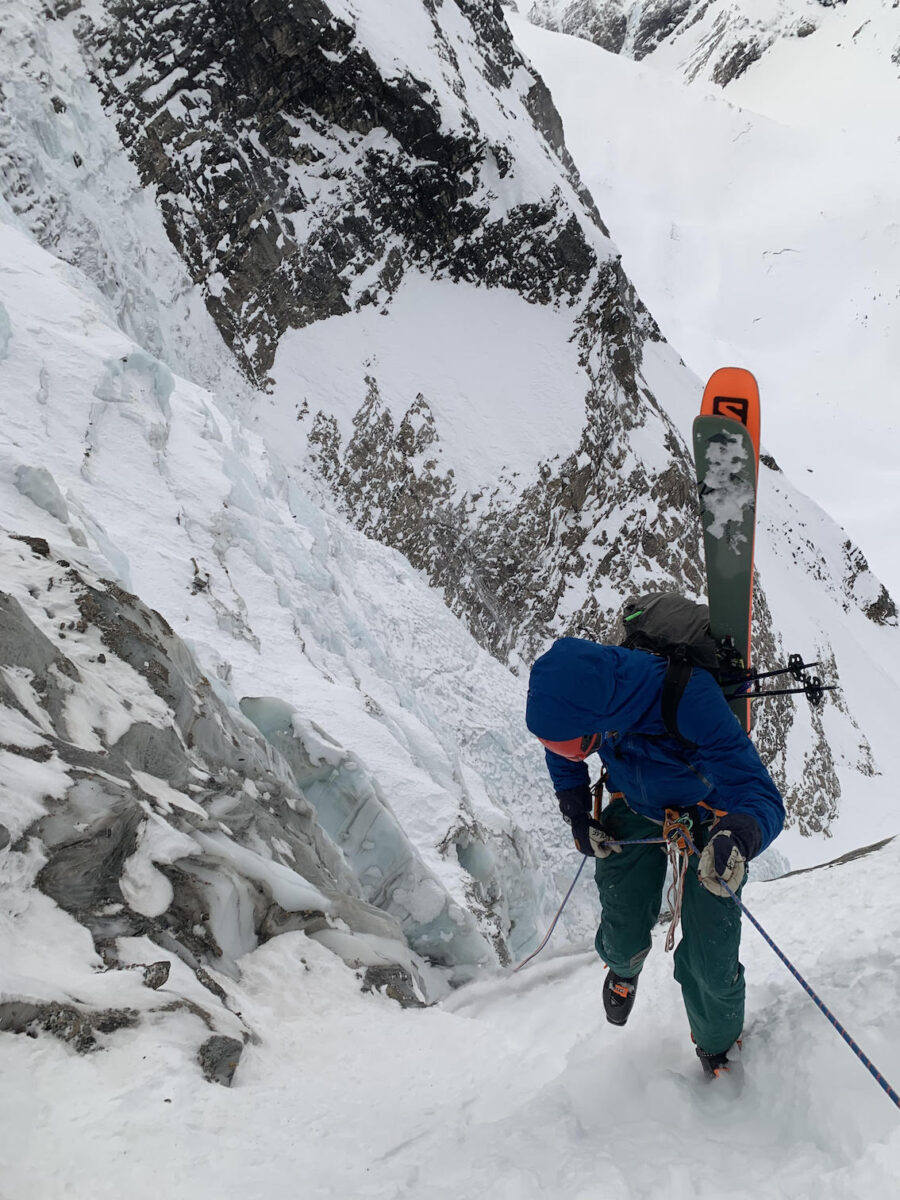
And the descent?
The snow on the upper face skied well with minimal slough and just soft enough to enjoy the exposed turns. We skied to 20 metres above the ice and descended a short rappel to our anchor, which we had established earlier. A 60-metre and 40-metre rappel got us through the serac ice and into the lower portion of the couloir. The snow here was firm and chalky and we linked turns to a traverse and one more 15-metre rappel through the rambling ice. At 5pm it was almost dark and we skied off the fan and onto the lake. By the time we crossed the lake the darkness had fully set in. We skied with headlamps back to the sleds for the long ride back to the vehicles. The specifics of the run are: 800m, m4+, WI4, A0, 50-55 degrees skiing and 4 rappels on the descent.
What was the weather like that day?
It was terribly cold, remote, and exposed. To get there, it’s a 40-minute drive south of Revelstoke to the FSR where we unloaded the sleds. It’s another 30km after that. We managed to warm up a bit during the two-hour skin to the base of the line.
What was the most difficult part of the experience?
I’m sure we’d all have different perspectives on what was most challenging. I honestly think it would be easier to say what wasn’t difficult. Nothing about this line was easy. The crux was climbing unsupported serac ice. It put us all in a very exposed position. I don’t think any of us are frothing to go back.
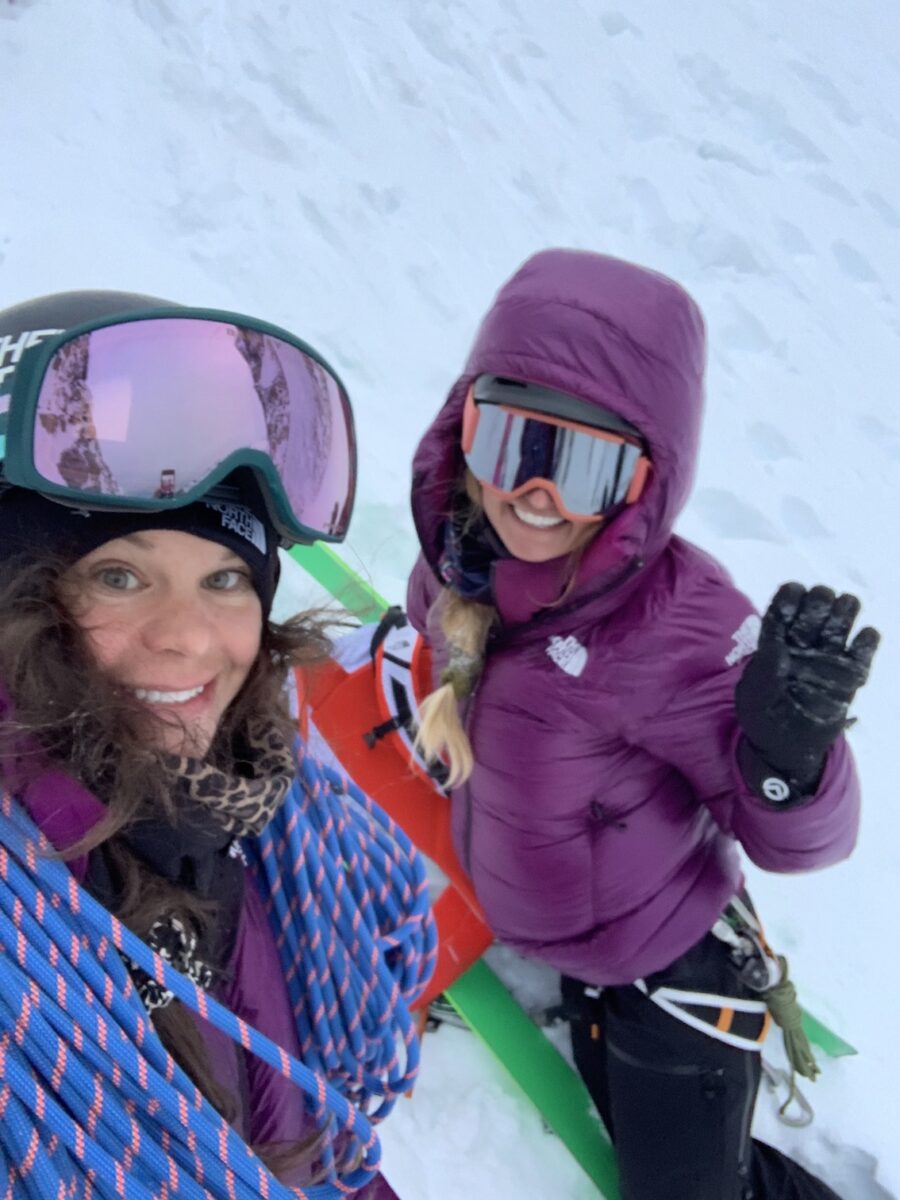
What was the best part, besides accomplishing it?
I think it would have to be the fact I got to spend a full day totally engaged with a solid crew of friends and using a lot of a tools to make it happen. It was a totally hard line!
Any moments when you thought, “This might not go?”
Well Brette and I had attempted this line two days before. We turned around climbing the serac because there was some huge cracking sounds and vibrations in the ice. We thought maybe it was unstable and retreated via rappel. It’s was terribly frightening and I’ll never forget the feeling. Once on rappel we noticed another line that might go a little more climbers left. We skied out that day thinking of coming back maybe in March? Once we returned back to my house in Revelstoke we told my husband about the potential line. He fired us up to rest one day and go back! “Don’t come home until you send” were his exact words. We rested the next day, contacted McNab and mobilized to meet the next morning one hour earlier. Then we went for it.
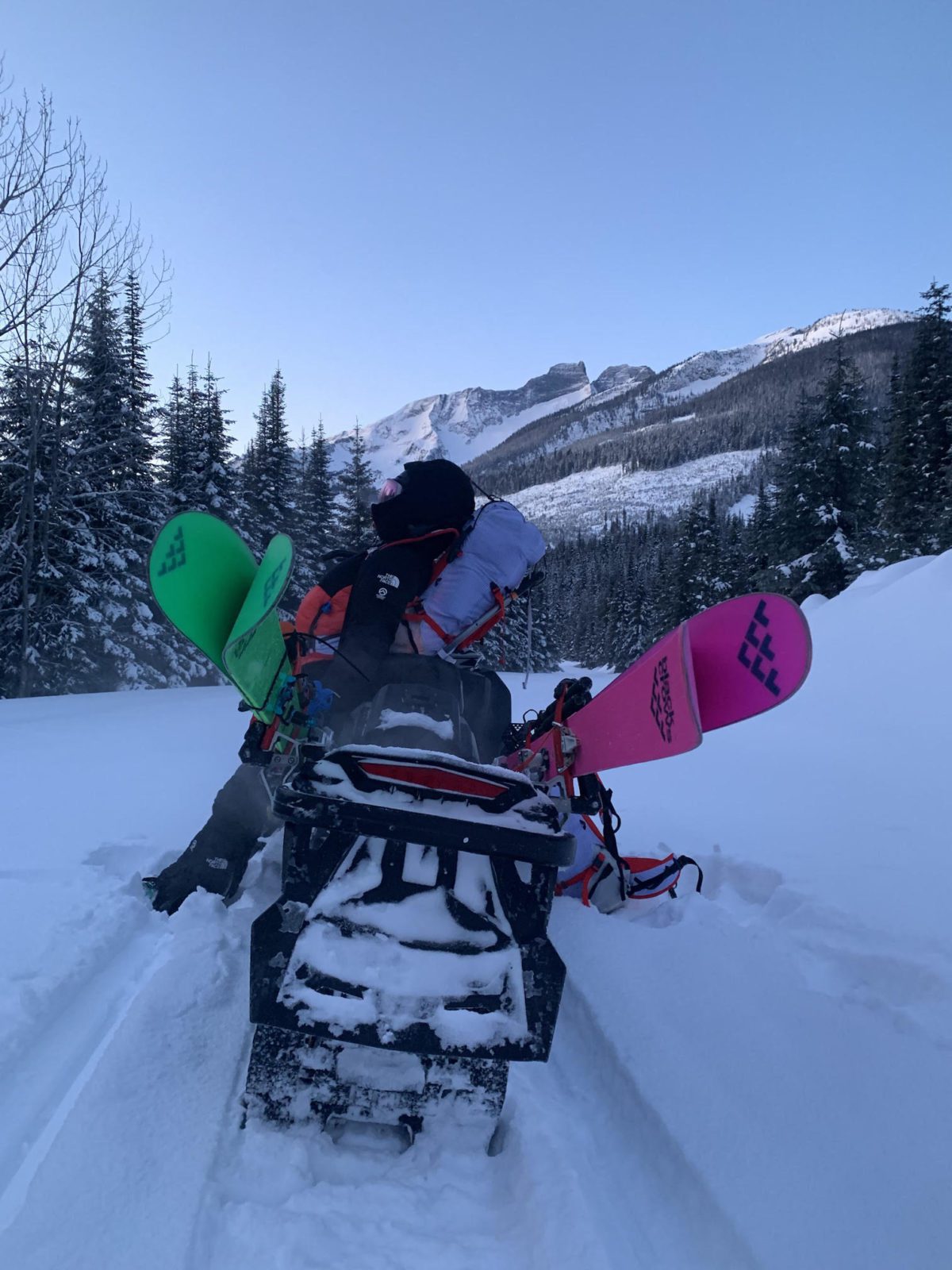
Who took the long-shot drone footage?
Steve Shannon shot was involved with that.
What’s next? Are you staying close to home again this season or are you off and away to some exotic locale?
I still have a bunch on lines in Western Canada I’d like to ski. So the majority of my winter I should be around. We’re so lucky here, it certainly makes it hard to leave. Come spring I might be heading to Baffin and maybe Pakistan. Fingers crossed.
—
Want more? Check out our story from KMC#40 about why Andrew McNab is the ultimate wingman:
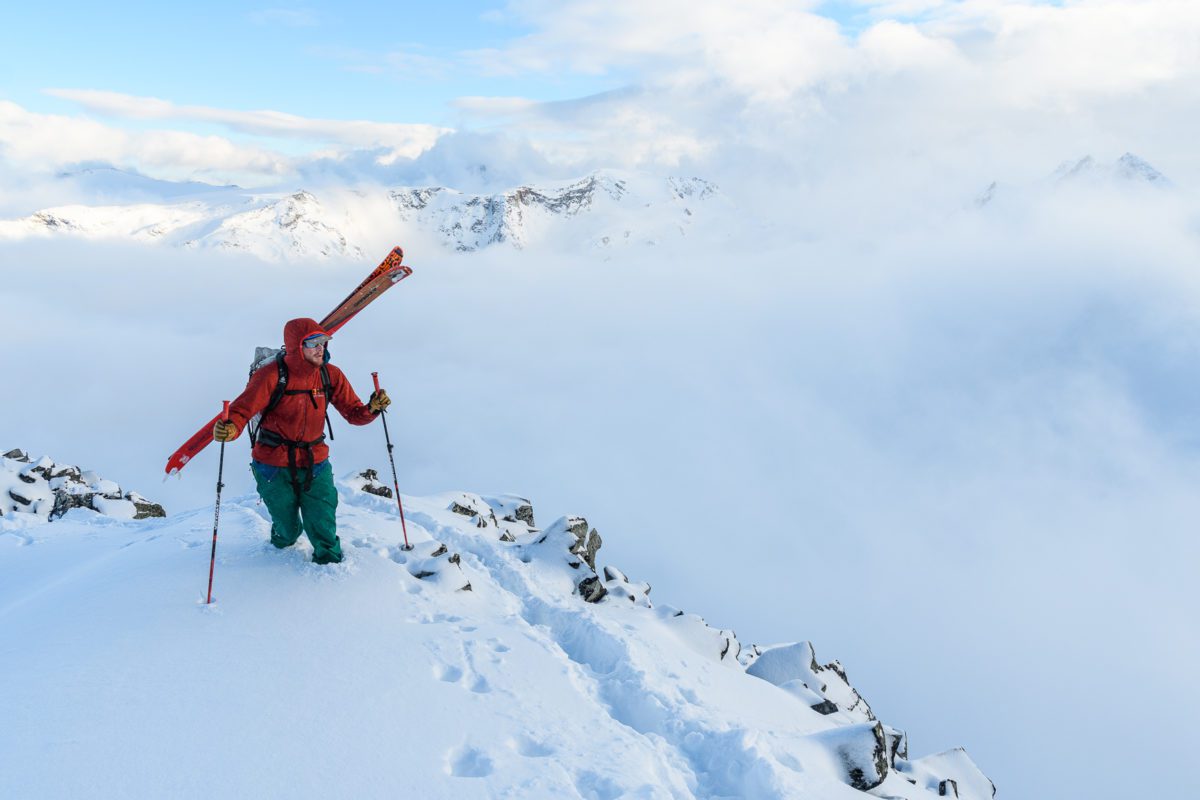
Related Stories
Cold Rush – Behind the Scenes
Sure, there was a boatload of photographers and cinematographers at the Red Bull Cold Rush. And then there was me, with…
The Search For Freedom: Behind the Scenes
Nelson, British Columbia-based filmmaker Jon Long checks in with a look behind the curtain as he takes us through the…
Behind the Scenes of SilverStar’s Recent Viral Video
The crew at the SilverStar bike park in Vernon, British Columbia, just released a sick vid featuring a downhill…
First Descent of the Incomappleux
Kootenay kayaker Carl Jacks and his merry band of uber gnarly whitewater addicts dive deep into one of the last un-run…
The Creation of “Regeneration” – A Behind-the-Scenes Interview
This month the movie "Regeneration" drops. We chat with one of its creators about snowboarding, the climate, and, more…


